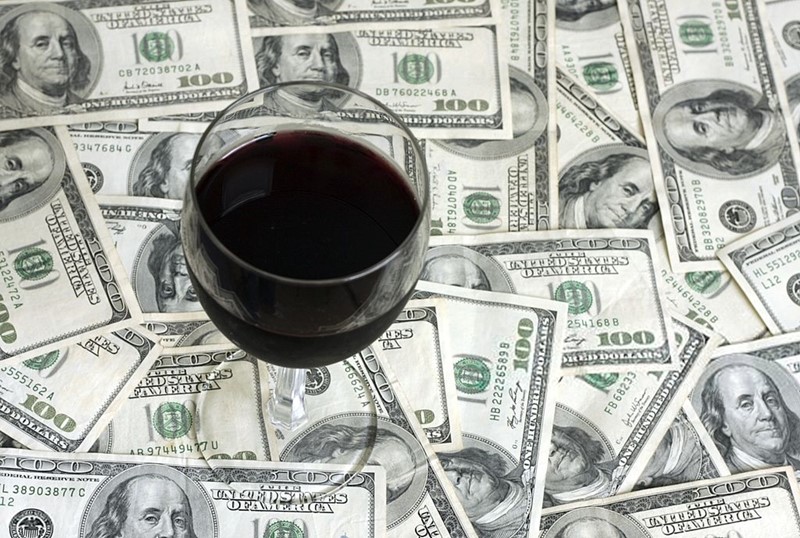Guide to Investing in Wine and Making Money Safely
Tips for understanding the wine investment market, achieving profitability, and ensuring security

A growing number of people are showing interest in wine as a tangible and appreciating asset. Many seek information about investment-worthy wines or the value of old bottles, viewing the sector as a stable long-term opportunity.
However, not everything that shines is gold. While wine is considered a relatively secure investment, it carries risks and requires patience. This is not a speculative market for those looking to get rich quickly. If immediate profits are your goal, wine investment is not the right choice.
For those seeking a long-term investment in tangible assets with the potential for significant returns, this market can be an attractive option. It is important to note that investing in wine does not simply mean purchasing a few bottles and storing them indefinitely. If you have wine at home with the idea of future resale, it may be better to drink it, as wine has a shelf life.
Most investments focus on a select group of wines that are not meant to be consumed. These wines appreciate in value over time as they change hands, similar to works of art. Their value is not based on taste—opening them would eliminate their financial worth—but on historical significance, previous ownership, or other unique factors.
Accessing this type of investment is possible through specialized firms that buy, sell, and establish pricing for collectible wines. These firms provide access to available wines, upcoming auctions, and market valuations. They also manage transportation, optimal storage, security, and insurance options against breakage or accidents.
For those seeking a more accessible approach, financial markets offer investment funds and portfolios dedicated to wine companies. However, these are speculative investments with greater risk, as investors do not own the physical asset.
The secondary, or "gray," market for wine investment has seen increased participation, leading to concerns about security. Fraud cases, such as counterfeit sales or nonexistent bottles, have raised caution. This sector shares similarities with investments in art, classic cars, and rare collectibles.
Ensuring a secure and profitable investment requires understanding the market. The most reputable auction houses and investment firms emphasize key principles for success. Investors should research the wine market, its key producers, and trusted investment firms. Reliable firms provide transparency and guidance, and the absence of detailed information should be a red flag.
Pricing is crucial; staying informed about market trends and valuation charts helps ensure fair purchase prices. Liquidity is another factor, as fine wine is not always easy to sell. Established brands with a strong resale market are preferable to speculative purchases.
Ownership verification is essential. If a third party manages storage, investors must confirm legal ownership with full retrieval rights. Proper storage conditions also play a critical role in maintaining a wine's value, and investors should be able to visit storage facilities if necessary.
Insurance against damage is highly recommended. One of the most expensive wine transactions involved an insurance claim of $225,000 for a Château Margaux 1787 bottle that was accidentally broken by a sommelier.
Investors should be cautious of promises of high short-term returns, unknown brands, or advance payment schemes. Wine investment is not a game of chance but a field where knowledge is key. It is advisable to invest only discretionary funds and avoid borrowing for such investments.
Market research is crucial to minimizing risks. While predicting wine trends is challenging, understanding supply and demand dynamics is beneficial. Highly sought-after wines tend to appreciate in value due to limited availability.
Counterfeits remain a significant issue despite increased authentication efforts. Investors must verify provenance, request documentation, and research the seller's reputation.
The history behind a bottle adds to its value. The most expensive wines often have historical significance, such as a notable event or previous ownership by a prominent figure. Investors should research a winery's history and significant events from the vintage year.
Rarity plays a role in valuation. Limited production increases a wine's worth, though sufficient availability is needed to sustain international demand. The number of previous owners also matters—wines that have changed hands multiple times tend to appreciate more than those with a single owner.
Wine valuations depend on harvest quality, and older wines generally have higher value. Studying vintage rankings, rather than just price charts, helps in selecting the right investment.
Brand recognition is another key factor. Wines from estates like Château Lafite, Romanée-Conti, Château d'Yquem, or Vega Sicilia are historically reliable investments. Just as renowned artists dominate the art market, top winemakers lead in wine investment.
Bottle formats influence resale value. Large-format bottles, such as magnums or jeroboams, tend to be more valuable. Traditional bottle sizes also appreciate, but those sold in cases or sets hold greater resale potential.
Following market trends is crucial. Wine investment is controlled by a small number of players, leaving little room for unexpected gains. Investing in established names at the right time offers the best chance of success in this highly specialized market.
Founded in 2007, Vinetur® is a registered trademark of VGSC S.L. with a long history in the wine industry.
VGSC, S.L. with VAT number B70255591 is a spanish company legally registered in the Commercial Register of the city of Santiago de Compostela, with registration number: Bulletin 181, Reference 356049 in Volume 13, Page 107, Section 6, Sheet 45028, Entry 2.
Email: [email protected]
Headquarters and offices located in Vilagarcia de Arousa, Spain.